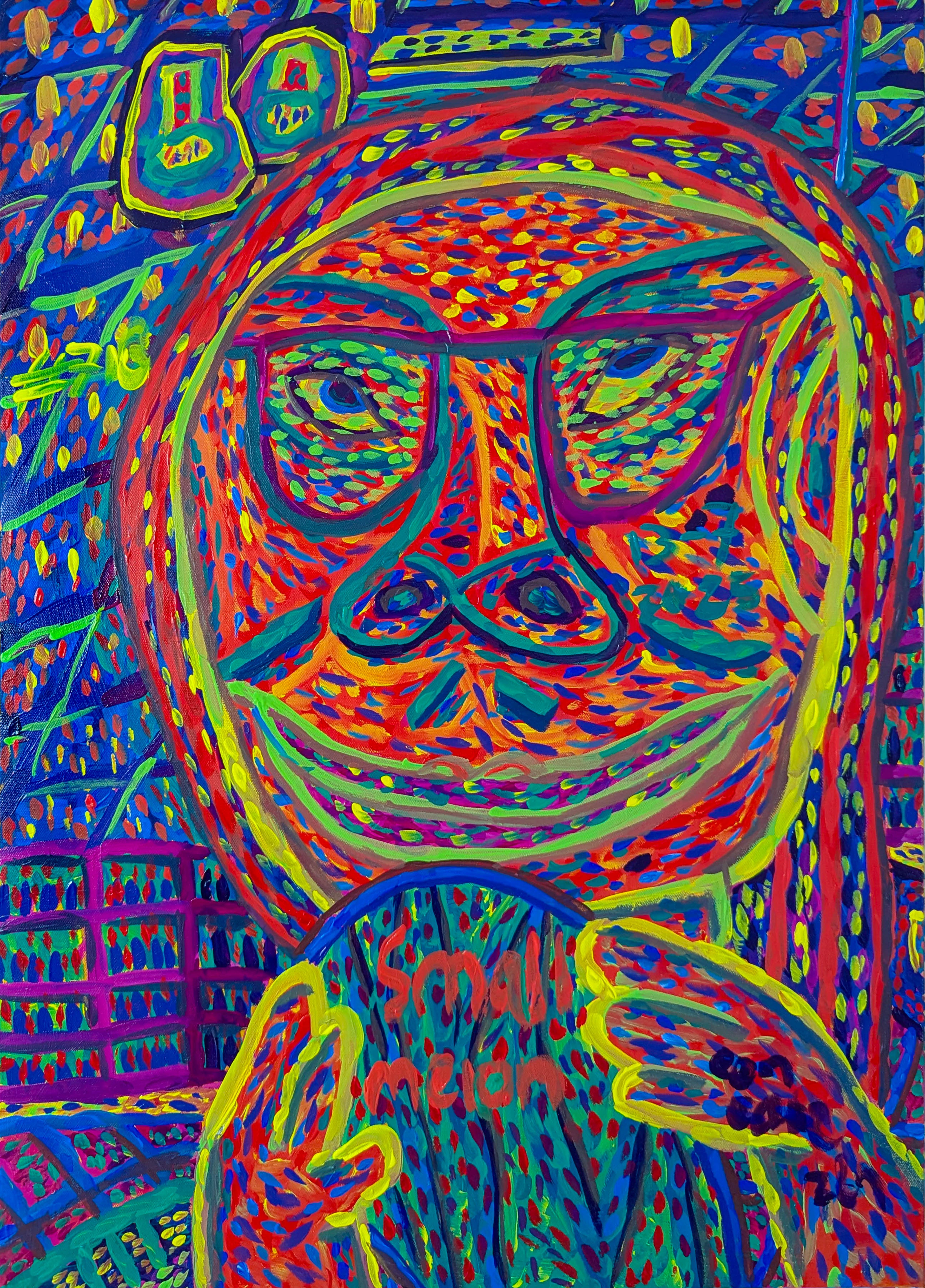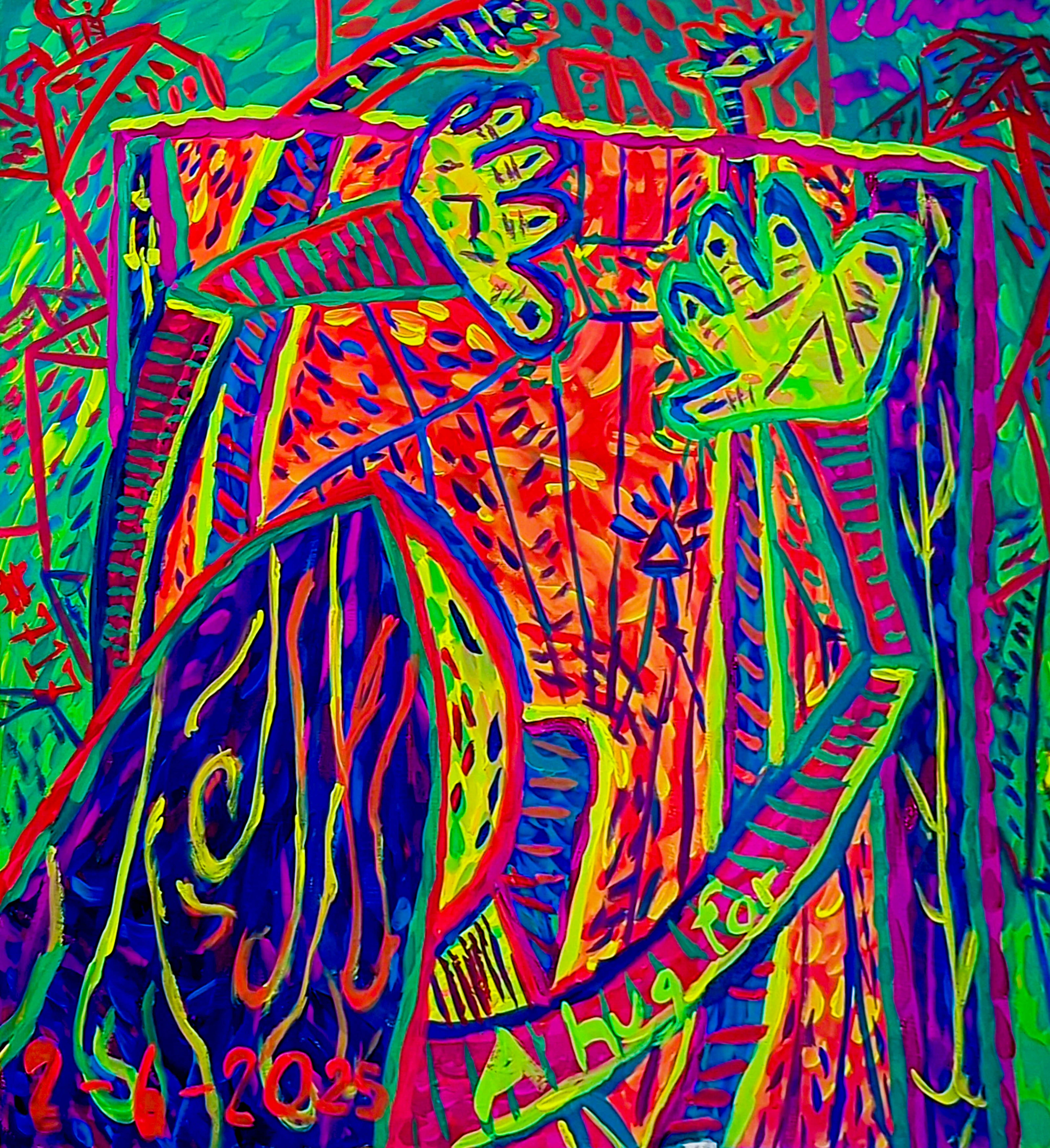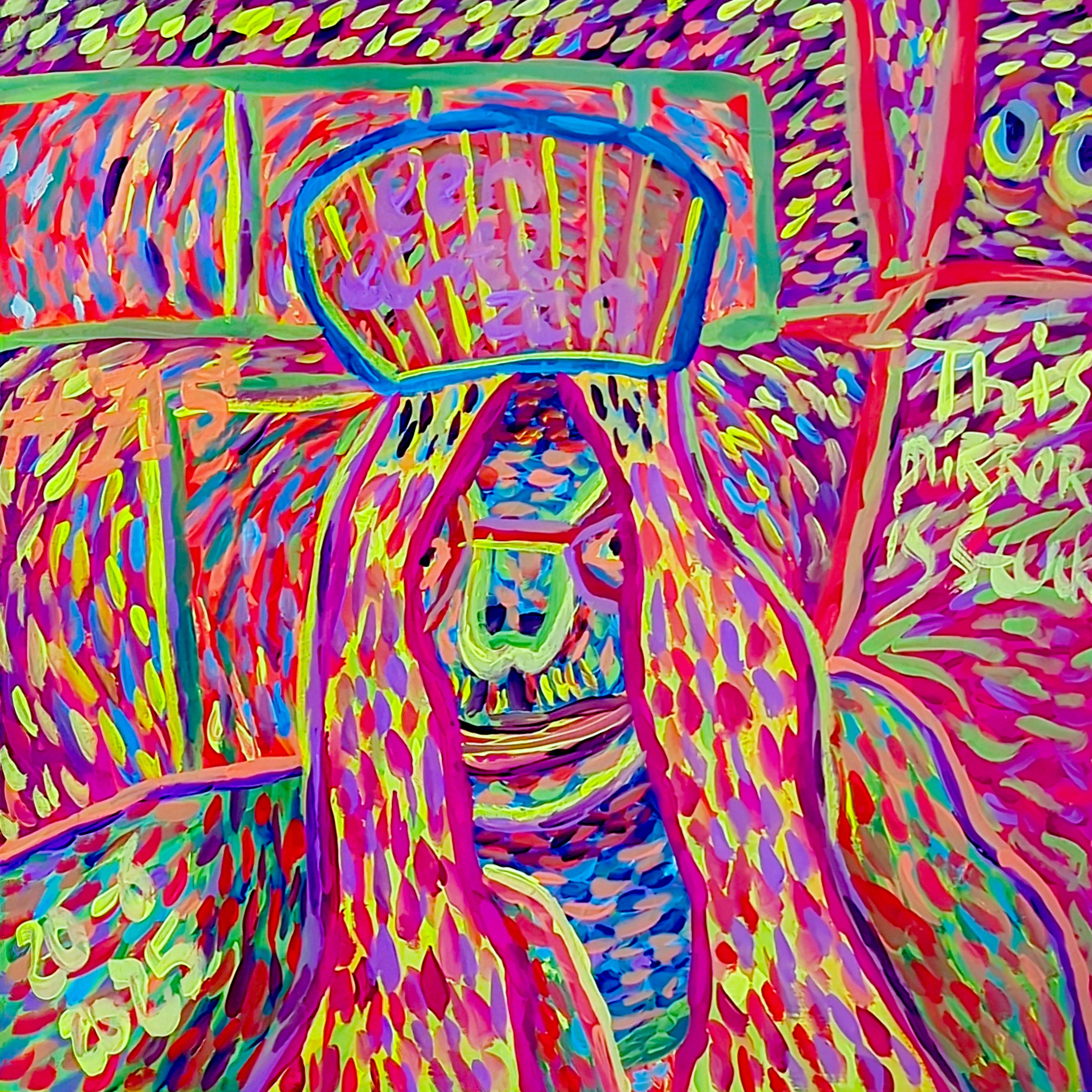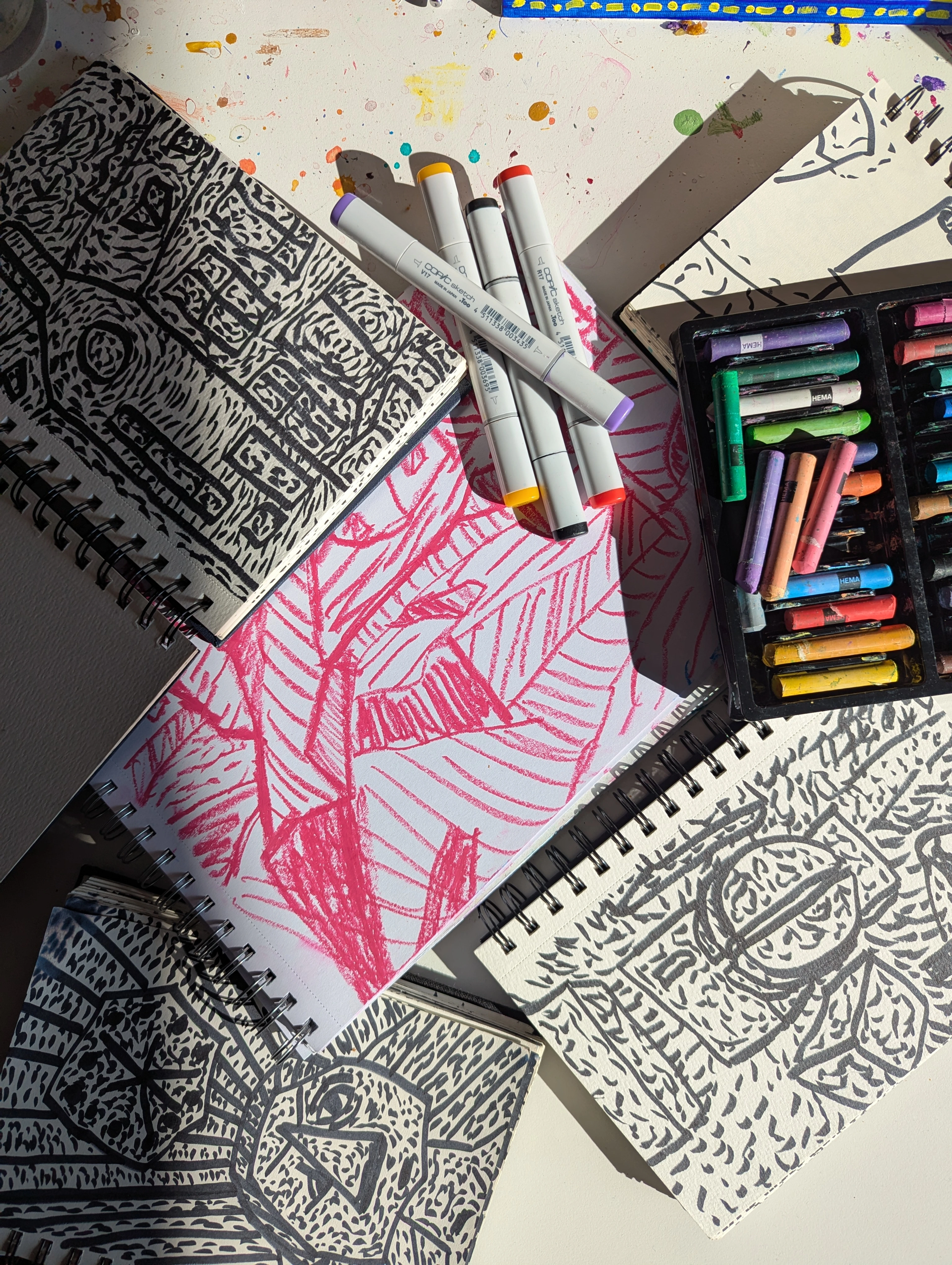
Developing Your Unique Artistic Style: A Personal Journey of Discovery and Evolution
Feeling lost finding your unique artistic voice? Join my personal journey of discovery, explore practical steps, embrace mistakes, and learn how to develop your own distinct, evolving art style.
Developing Your Unique Artistic Style: A Personal Journey of Discovery and Evolution
Finding your unique artistic style... ah, the quest that keeps so many of us up at night, staring at a blank canvas or a half-finished sketch, wondering, "Who am I as an artist?" It feels like this mythical beast, something you either have or you don't. But let me tell you, from one creative soul to another, it's not a destination you suddenly arrive at. It's a winding, messy, beautiful journey of self-discovery, experimentation, and yes, sometimes, glorious failure. It's less about chasing a predefined look and more about expressing an inner state, a personal truth.
I remember feeling utterly overwhelmed when I first started taking my art seriously. I'd look at the masters, the contemporary stars, and even artists just a few steps ahead of me, and think, "How did they get there? How did they find that?" My own work felt... derivative. Like a patchwork quilt of everything I admired but with no thread of me running through it. If you're feeling that way, take a deep breath. You're exactly where you need to be. That feeling of being lost is often the first step towards finding your own path. I recall one particularly frustrating week where everything I touched felt like a pale imitation of someone else's work – the colors were wrong, the lines felt forced. I tried to paint a landscape like Monet, but my brushstrokes felt clumsy, and the light just wouldn't capture that fleeting moment he mastered. Then I attempted a portrait with the bold lines of Picasso, and it just looked... angry, but not in the way I intended. It was disheartening, but looking back, that frustration was the friction needed to spark something new. It was the universe nudging me, saying, "Okay, that's not you. Keep looking."
What is "Unique Artistic Style," Anyway? And Why Bother?
Before we dive into the 'how,' let's talk about the 'what.' Your unique artistic style isn't just a signature brushstroke or a favorite color palette. It's the visual language you use to express yourself. It's the culmination of your influences, your personality, your experiences, your technical skills (or lack thereof!), and the way you see the world. It's the feeling your work evokes, the consistent elements that make someone say, "Ah, that's yours." It's the echo of your soul in the materials you choose and the marks you make.
Speaking of technical skills (or the glorious lack thereof!), don't let perceived deficiencies hold you back. Sometimes, the most distinctive aspects of an artist's style emerge from working with their limitations. Maybe you struggle with perfectly straight lines, so your style develops a beautiful, wobbly, human quality. Perhaps you can't render realistic anatomy, leading you to explore abstract or stylized figures. Embracing these 'weaknesses' and finding unique workarounds can forge a path to originality faster than trying to force yourself into a mold that doesn't fit your natural inclinations or current skill level. It's about authenticity, not textbook perfection.
Think of it like your handwriting. You learned the basic alphabet, just like we learn the elements of art or how artists use color. But over time, your handwriting developed its own quirks, its own flow, its own personality. Some letters loop differently, some are sharper, some slant more. That's your unique handwriting style. Your artistic style is the same, but with paint, clay, pixels, or whatever your chosen medium is.
It's not about being wildly different for the sake of it. It's about being authentically you. And that 'you' is shaped by everything – your personal history, the culture you grew up in, the books you read (art for book lovers, anyone?), the music you listen to (art for music lovers, anyone?), even your non-artistic hobbies. How does a love for gardening show up? Maybe in a particular sensitivity to organic forms or color palettes. How does a fascination with old maps manifest? Perhaps in layered textures or intricate line work. All of it seeps into your creative output, whether you realize it or not.
Let's dig a little deeper into those influences. It's not just the obvious art history stuff. Think about the architecture that moves you – the clean lines of modernism, the ornate details of baroque, the raw textures of brutalism. How might that translate into your compositions or surface treatments? Consider the films you love; is it the dramatic lighting, the color grading, the way scenes are framed? These visual cues can inform your use of light and shadow (how artists use light and shadow dramatically) or your compositional choices (art composition). Even seemingly unrelated interests like physics (patterns, forces), cooking (texture, layering), or coding (structure, logic) can subtly shape the way you approach your work. It's about recognizing these connections and allowing them to filter through your creative process.
Consider how your choice of line quality – is it sharp and precise, or loose and gestural? – speaks volumes. Or how your brushwork, whether thick impasto or thin washes, becomes a signature. Even your compositional choices, like a preference for negative space or a specific perspective, contribute to that unique visual fingerprint. It's the sum of these small, often unconscious, decisions that build your style. As you become more aware of these elements, you start to build a visual vocabulary – a set of forms, marks, colors, and compositional habits that are uniquely yours. Think of it as the recurring motifs and structures that appear across your work, creating a recognizable language. This vocabulary isn't just about repeating the same image; it's about a consistent way of seeing and rendering the world, whether you're painting a portrait or an abstract landscape.
Why Bother Finding Your Style?
Is it really necessary? Can't you just... make stuff? Absolutely! And for many, the joy is purely in the making. But developing a style offers a few wonderful things. For me, finding my style was about feeling like my work finally matched the chaotic, colorful, and sometimes introspective world inside my head. It felt like coming home. It's the visual equivalent of finally speaking your own language fluently. Here are some of the benefits I've experienced and seen in others:
- Clarity: It helps you make creative decisions faster. When you know your visual language, you have a framework. It's like having a compass in the vast ocean of possibilities. It streamlines your process.
- Connection: Your unique voice resonates with others. It's how people connect with you through your work. It builds recognition and helps you stand out in a crowded world (like navigating online art marketplaces).
- Confidence: As your style emerges, you feel more confident in your artistic identity. You're not just making things; you're making your things. This confidence is palpable in your work.
- Evolution: A defined style gives you a starting point to evolve from. It's a foundation, not a cage. It allows for growth and change while retaining a core identity.
- Cohesion: It helps build a recognizable body of work. When your pieces share a common thread, they speak to each other, forming a cohesive portfolio that tells a clearer story about you as an artist.
- Practical Benefits (Yes, Money!): For artists who want to sell their work (art for sale), a recognizable style is crucial. It helps collectors identify and remember your work, builds your 'brand,' and can even justify higher prices as your unique voice becomes sought after. It signals consistency and artistic maturity.
The Journey, Not a Destination (But You Need a Map...ish)
Let's bust a myth right now: you don't just 'find' your style one sunny afternoon under a tree. (Though wouldn't that be lovely?) It's an ongoing process. Your style will shift, mature, and maybe even take unexpected detours as you grow as a person and an artist. And that's okay! It should be alive, just like you are.
My own journey has involved countless hours in the studio, experimenting with different types of artwork, materials, and techniques. There were phases where I tried to paint like Van Gogh, others where I was obsessed with abstract expressionism, and even a brief, awkward period trying to replicate Cubism. It all felt a bit like trying on clothes that didn't quite fit.
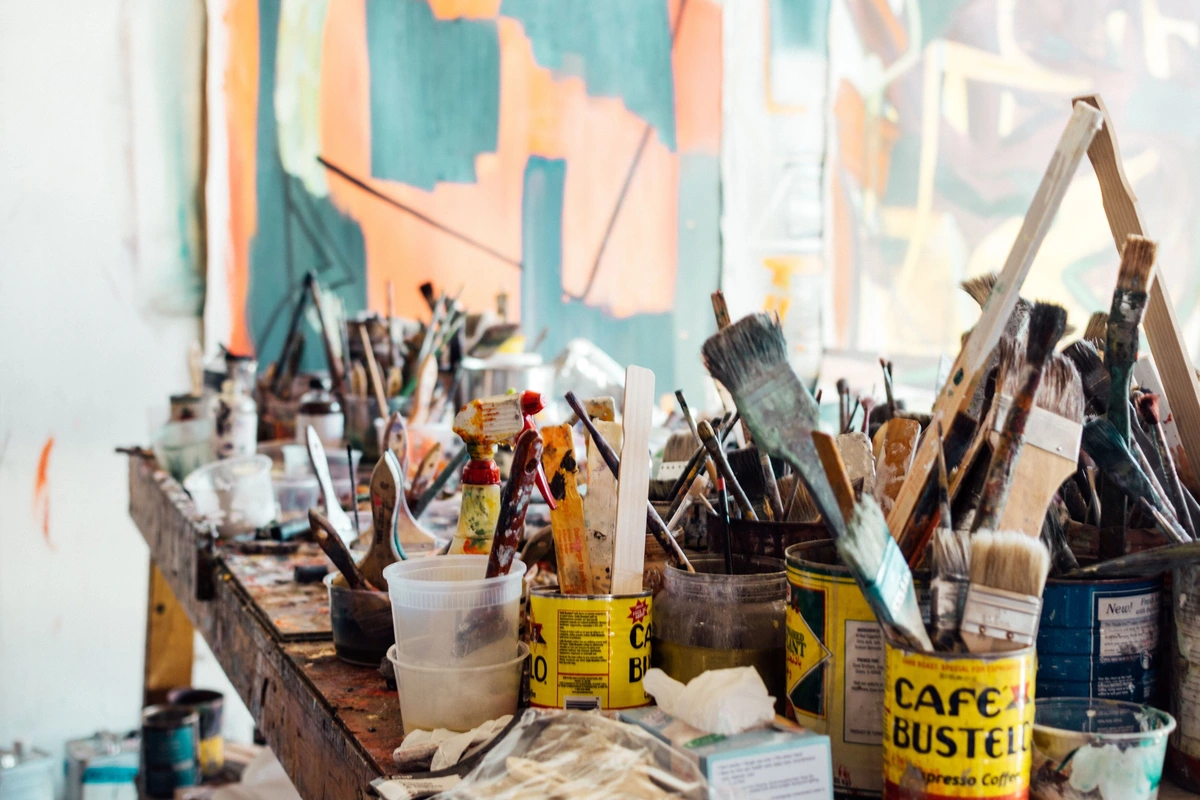
It wasn't until I stopped trying to find a style and just focused on making work that felt authentic to my current mood, my current thoughts, my current obsessions, that something started to click. It was less about chasing a look and more about expressing an inner state. It was about listening to the quiet whispers of my own creative intuition. This shift from searching to expressing is often the most crucial turning point.
Practical Steps to Unearthing and Evolving Your Style
Okay, enough philosophizing. Let's get our hands dirty and talk about the doing. How do you actually do this? Think of these not as rigid rules, but as invitations to explore. These are interconnected practices you can cycle through, revisit, and adapt. Here are some steps that helped me, and that I see in the journeys of other artists:
1. Embrace Play and Explore Relentlessly
Approach your creative time with a spirit of play, free from judgment or the pressure to produce a finished masterpiece. Just make stuff! Try everything. Seriously. Paint, draw, sculpt, collage, digital art, textiles (the rise of textile art is fascinating!). Work with different subjects – portraits, landscapes, abstract forms. Use different tools. Don't worry about mastering anything yet; just play. This is how you discover what materials and processes feel most natural and exciting to you. It's like speed dating for your creative soul.
Push your boundaries with specific exercises:
- Limited Palette: Spend a week using only three colors plus black and white. See how you create depth and mood with constraints.
- Single Element Focus: Dedicate a series of works to exploring just one element of art, like line, texture, or shape. How many ways can you use line to convey emotion?
- Unusual Materials: Make art with things you find around the house (coffee grounds, spices, old newspaper) or in nature (leaves, dirt, twigs). What unexpected textures or colors emerge?
- Scale Play: Create a series of miniature pieces, then try working on a massive canvas or wall. How does scale change your approach and the viewer's experience?
- Non-Visual Input: Listen to a piece of music and try to capture its feeling visually. Or create a piece based on a strong memory, a smell, or a complex emotion. How do you translate the intangible into the tangible?
These constraints and explorations can push you in surprising directions, revealing hidden preferences and unique approaches you wouldn't have found otherwise. They also highlight how the medium itself imposes constraints and offers possibilities that shape the final outcome. Working with watercolor, for instance, inherently leads to a different style than working with thick oil paint or sharp vector graphics. Embrace the limitations and strengths of your chosen tools.
2. Study What Resonates (Actively!)
Look at art – lots of it! Visit museums worldwide and galleries. Dive into art history. Pay attention to what genuinely excites you. Is it the bold colors of Fauvism? The emotional depth of Expressionism? The composition in Modern Art? The texture in Assemblage Art? Don't just look at the famous names (top artists ever, top artists alive today); explore underappreciated artists and emerging artists. Identify specific elements you love – maybe it's a certain way of handling light (how artists use light and shadow dramatically), a particular texture, a recurring motif, or how they use symbolism. Collect these inspirations like a magpie, but then go deeper.
Active study turns looking into learning. Ask yourself specific questions when viewing art:
- How is the light created? Is it harsh or soft? Where does it come from?
- What is the dominant texture? How is it achieved (brushwork, material, illusion)?
- How does the artist use edges? Are they sharp and defined, or soft and blended?
- What is the focal point, and how is your eye led around the composition?
- What colors are used, and how do they interact? Are they harmonious or jarring?
Keep a visual journal where you quickly sketch or note down elements from art you see that stand out. Try quick studies that isolate and replicate just one stylistic element from an artist you admire, like only focusing on how they render hands or their unique use of negative space.
But don't stop at visual art! As we touched on earlier, inspiration is everywhere. How can the rhythm of your favorite song influence your brushstrokes? Could the structure of a poem inform your composition? Does the texture of moss on a stone wall spark an idea for a surface treatment? Does the logic of a coding sequence suggest a new way to layer elements? Actively seek out these connections in your daily life and see how they filter into your work.
3. Copy (Yes, Copy!) and Adapt
This might sound counter-intuitive, but copying the work of artists you admire is a time-honored way to learn. You're not doing it to sell or claim as your own (that's a big no-no, obviously!), but to understand how they did it. It helps you internalize techniques and understand the process behind the finished work, not just the surface appearance. When you copy, you're building muscle memory, understanding how layers of paint interact, seeing how colors are mixed in practice, and learning how an artist constructs a composition stroke by stroke. Try to replicate a brushstroke, a color combination, a compositional choice. It's like learning a language by mimicking native speakers. As you do this, you'll inevitably start doing things your way. You'll adapt their techniques through the filter of your own hand and mind. This is where imitation starts to morph into innovation. My own attempts to paint like Van Gogh taught me more about my own brushwork than any technical lesson. I remember trying to capture the swirling energy of his skies, but my hand naturally moved in broader, flatter strokes. It wasn't Van Gogh, but it was... something else. Something that felt a little more like me.
4. Embrace Your "Mistakes" (and Constraints)
Some of the most interesting aspects of my style came from things I initially saw as mistakes. A wonky line, an unexpected color bleed, a texture that didn't go as planned. Instead of trying to fix them or discard the work, lean into them. Ask yourself, "What if I did more of that?" Your quirks are often the seeds of your unique style. Don't strive for perfection; strive for authenticity. Similarly, don't fear constraints. Sometimes, having limitations – like a specific theme, a limited palette, or a small canvas – forces you to find creative solutions you wouldn't have otherwise considered. Constraints can be surprisingly liberating, pushing you towards unique choices that define your style. I once accidentally spilled a dark wash across a painting I thought was finished. My first instinct was panic. But instead of throwing it away, I decided to integrate it, letting it bleed and pool. It completely changed the mood of the piece, adding a layer of depth and chaos that I ended up loving, and it became a technique I now use intentionally.
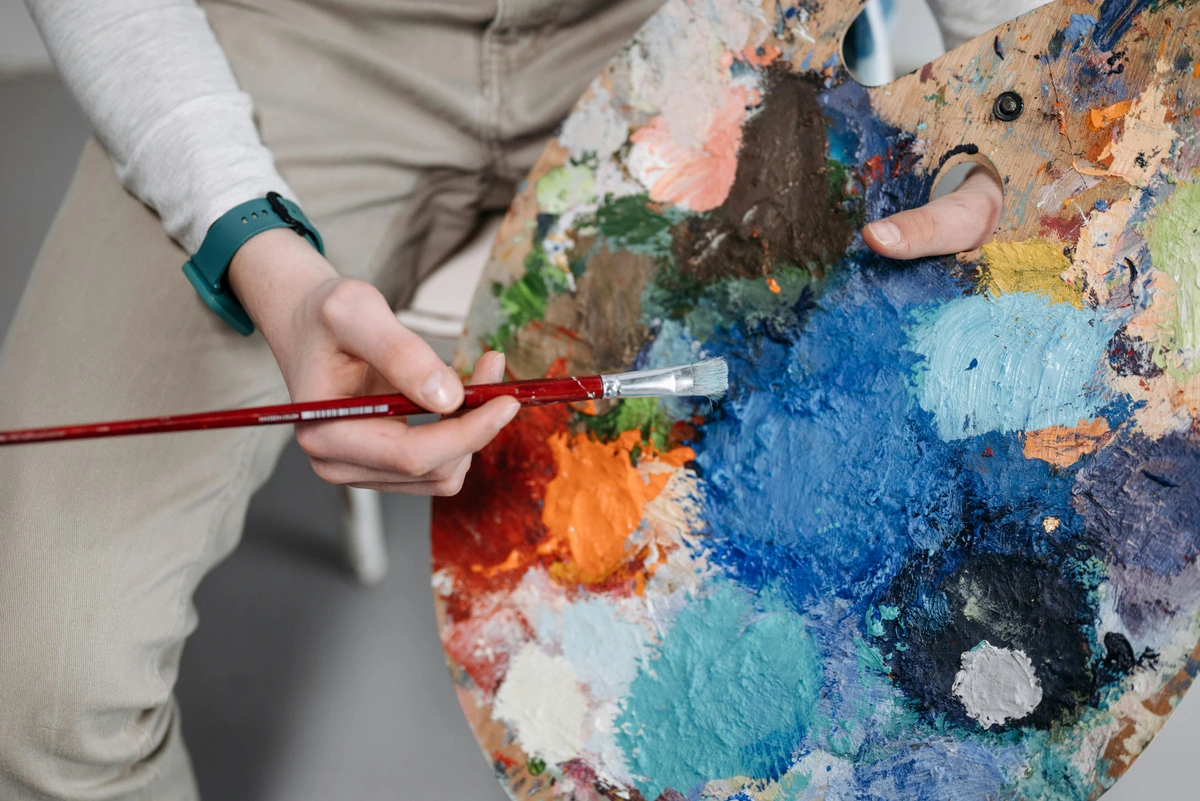
5. Create Series of Work
One powerful way to see your style emerge is by creating a series of works focused on a single idea, material, technique, or constraint. When you explore the same theme or limitation repeatedly, you naturally develop a consistent approach. You'll refine your methods, discover variations, and the recurring elements of your visual language will become more apparent. This focused practice helps solidify your voice and makes it easier to identify what feels uniquely yours across multiple pieces.
6. Identify Your Recurring Themes and Subject Matter
What topics, ideas, or visual elements do you find yourself returning to again and again? This isn't about limiting yourself, but recognizing the natural pull of your interests. Do you consistently draw figures, even when trying landscapes? Are you fascinated by urban decay, or the quiet beauty of nature? Do certain colors or shapes appear repeatedly in your work? These recurring elements are strong indicators of your innate artistic concerns and can form the bedrock of your style. Exploring why these themes resonate with you can deepen your connection to your work and make your style feel more authentic and purposeful.
7. Reflect and Refine (and Seek Feedback)
Regularly step back and look at your body of work. What themes keep appearing? What colors do you gravitate towards? What techniques feel most natural? What emotions are you trying to convey? Writing an artist statement can be a surprisingly helpful exercise in articulating these patterns. This isn't about boxing yourself in, but about understanding the threads that are already there. Refine means honing, not restricting.
Journaling can be a powerful tool here. After a studio session, ask yourself:
- What felt effortless today? What felt like a struggle?
- What surprised me in the work?
- What am I trying to communicate with this piece?
- How does this piece relate to the last one I made?
- Does this work feel authentically mine?
It also helps to get an outside perspective. Share your work with trusted peers, mentors, or even join a critique group. Be open to constructive feedback, but also learn to filter it through your own vision. Not every piece of advice is right for your journey. A good mentor or critique group can offer insights you'd never see on your own, helping you identify strengths and areas for growth that contribute to your unique voice.
8. Consistency Through Practice
This is perhaps the most important step, and the hardest. You have to make art, consistently. Even when you don't feel inspired (check out finding inspiration if you're stuck!), even when you feel like it's all terrible. It's through the sheer act of doing, day after day, week after week, that your hand, your eye, and your voice start to align. It's in the studio, putting in the hours, that the magic happens. Think of it like training your creative muscles. Just as a musician practices scales or an athlete trains daily, consistent artistic practice builds the muscle memory of your unique approach. Your hand learns the rhythm of your lines, your eye becomes attuned to your preferred color harmonies, and your intuition strengthens. It's not just about making finished pieces; it's about the daily discipline of showing up and exploring. My own artistic timeline is a testament to this – years of showing up, even when the results felt underwhelming.
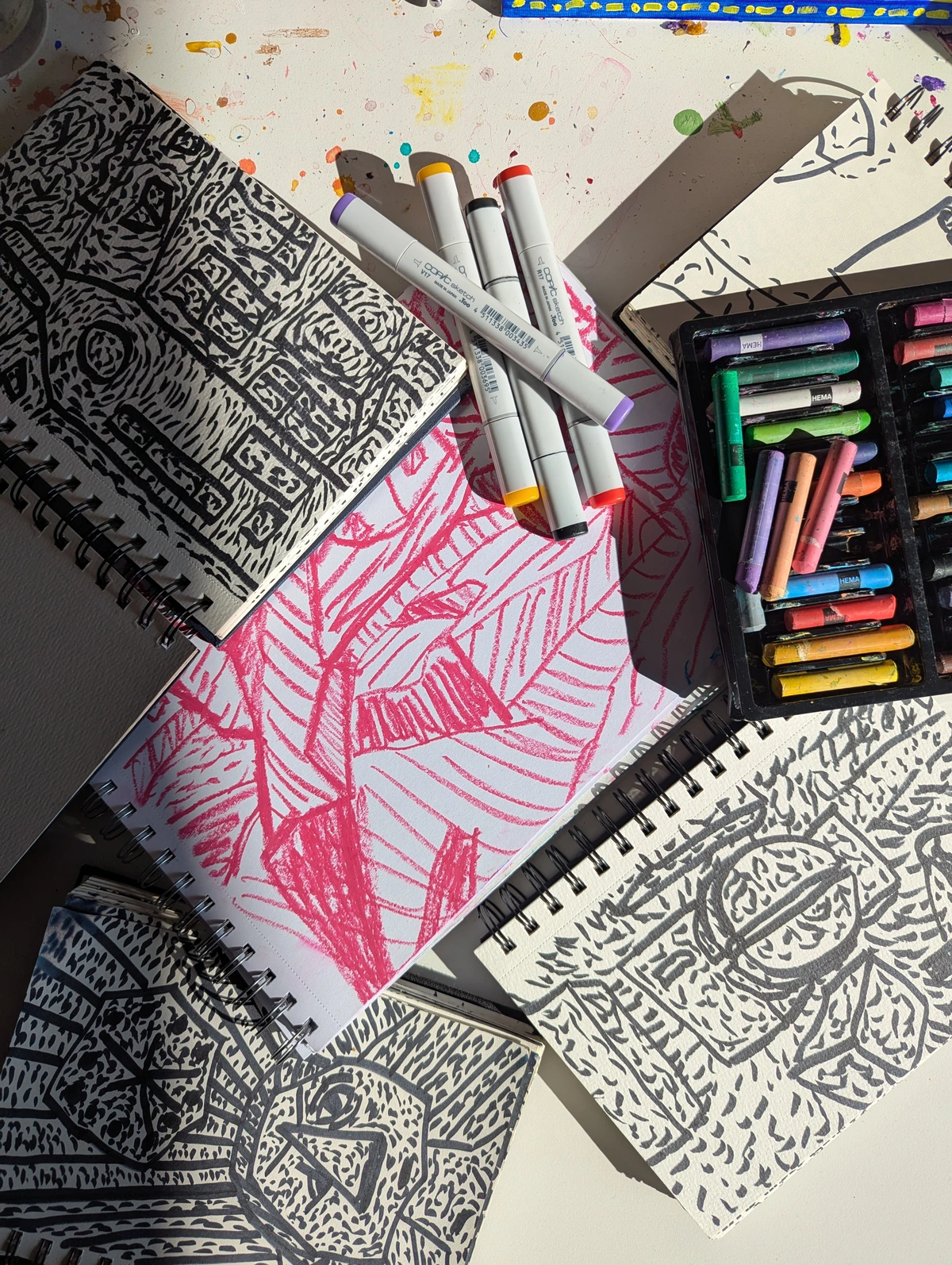
Your Style and Your Artist Identity
As your style begins to solidify, it naturally becomes intertwined with your identity as an artist. It's your visual signature, the thing that makes your work recognizable. For many, this leads to thinking about how they present themselves and their work to the world – perhaps developing a consistent 'brand' or aesthetic. This isn't about being fake; it's about clearly communicating who you are and what your art is about. It's about owning your unique voice and sharing it confidently, whether you're showing in a local art gallery or putting your art for sale online.
Your style also often reflects the subject matter or themes you are most drawn to. If you're fascinated by urban decay, your style might develop gritty textures and muted palettes. If you're obsessed with the human form, your style will be shaped by how you choose to render anatomy, expression, and posture. The 'what' you create is deeply linked to the 'how' you create it. Developing a strong, recognizable style can also be particularly important if you're pursuing specific career paths like illustration, where clients look for a distinct visual voice, or if you aim to be represented by galleries who seek artists with a clear artistic direction.
Overcoming the Inner Critic (and External Pressure)
Ah, the inner critic. That delightful voice that tells you your work isn't original enough, isn't good enough, isn't anything enough. This voice is particularly loud when you're trying to find your style because you feel vulnerable and uncertain. Acknowledge it, maybe even thank it for trying to keep you 'safe,' but don't let it drive the bus. Your style is unique because you are unique. No one else has your exact combination of experiences, thoughts, and perspectives. Your voice is valid, even if it's still a whisper. Trying to silence the inner critic completely is like trying to stop the tide; it's often more effective to simply acknowledge its presence and choose not to listen. "Okay, Inner Critic, I hear you think this is terrible. Thanks for sharing. Now, back to painting."
And then there's the external pressure. Maybe friends or family don't 'get' your new direction, or you see other artists achieving success with a style that feels more conventional. It's easy to doubt yourself. Remember why you started this journey – to express yourself. Stay true to that inner compass. The most compelling art comes from authenticity, not from trying to fit someone else's mold. It's a constant dance between listening to others and fiercely protecting your own vision.
Navigating Burnout on the Style Journey
The intense search for style, coupled with the pressure to create and the whispers of the inner critic, can sometimes lead to burnout. It's a real risk when your creative process feels like a relentless quest rather than a joyful exploration. Recognize the signs: exhaustion, lack of motivation, feeling disconnected from your work, or a pervasive sense of frustration. If you hit this wall, it's okay to step back. Take a break, revisit the 'play' aspect, try a completely different medium or subject just for fun, or simply rest. Your style journey is a marathon, not a sprint. Listen to your body and mind, and remember that creative blocks are often just signals that you need to shift your approach or recharge.
Your Style is Alive
Remember, your style isn't a static thing you lock down forever. It will breathe, change, and grow with you. The style I have now is different from the one I had five years ago, and I hope it will be different five years from now. Embrace this evolution. It means you're still exploring, still learning, still alive as an artist. It's a living, breathing extension of your own growth.
Maybe your style will lead you to create art for sale, or maybe it's purely for personal expression. Both are perfectly valid paths.
FAQ
Q: How long does it take to find your unique style? A: There's no set timeline! For some, elements emerge relatively quickly; for others, it's a lifelong process. Focus on the journey and consistent practice rather than a deadline. It's about discovery, not a race.
Q: What if my style looks too similar to another artist's? A: Influence is natural and good! If you're consciously copying to sell or claim as your own, that's unethical. But if you're genuinely exploring and find similarities, don't panic. Keep making work, keep experimenting, and your own voice will naturally differentiate itself over time. Authenticity is key. Your unique perspective will shine through.
Q: Do I need to stick to one medium or subject to develop a style? A: Not necessarily! While focusing can help initially, your style can manifest across different mediums and subjects. It's the underlying approach, the visual language, that ties it together. Feel free to explore!
Q: Can my style change over time? A: Absolutely, and it should! Growth and evolution are natural parts of the artistic process. Embrace the changes as signs of your development.
Q: How do I deal with people who don't like my style? A: This is tough, but remember that art is subjective. Not everyone will connect with your work, and that's okay. Listen to constructive criticism from sources you trust, but don't let negative opinions derail your authentic expression. Your style is for you first.
Q: What if I feel my emerging style is boring or not exciting enough? A: That's a common feeling! Often, what feels authentic to you might seem unremarkable from the inside. Trust the process. Keep exploring, keep refining, and keep making work that feels true to you. What feels 'boring' might actually be the consistent thread that makes your work recognizable and powerful to others. Seek feedback from trusted sources, but ultimately, your style is about your unique voice, not about being universally exciting.
Q: How do I know when I've 'found' my style? A: It's less like finding a lost object and more like recognizing your own voice. You'll start to notice recurring elements, techniques, and themes in your work that feel distinctly yours. You'll feel more confident in your creative decisions, and others might start recognizing your work without seeing your signature. It's not a finish line, but a growing sense of alignment between your inner vision and your external expression. And remember, it will continue to evolve!
Q: Should I try to define my style with words? A: Defining your style in words can be helpful for articulating your vision (especially for an artist statement or talking to galleries), but don't feel limited by labels. Sometimes, words can box you in. Focus more on the feeling and visual language than a perfect description. Your art speaks its own language.
Q: How do I balance developing my personal style with creating work for clients or commissions? A: This is a common challenge! Try to find projects that align with your emerging style, or see commissions as opportunities to apply your unique voice to a specific brief. Sometimes, client work can even push you to explore new facets of your style. Communicate clearly with clients about your artistic approach, and remember that your distinct style is often what attracts them in the first place.
Your style is the visual echo of your unique self. Keep creating, keep exploring, and trust the journey. It's the most rewarding adventure you'll ever embark on in your creative life.


